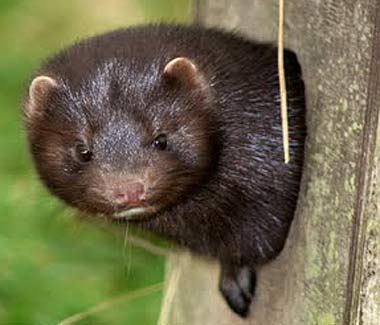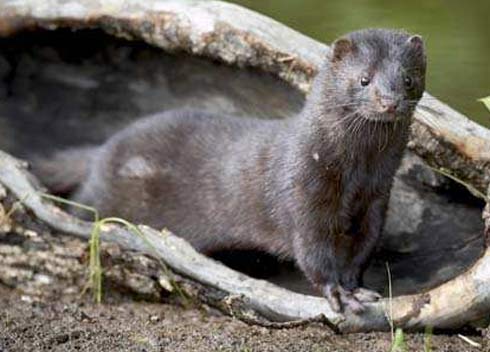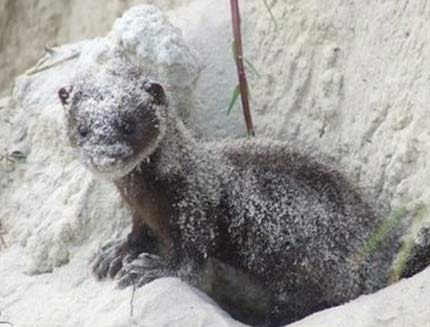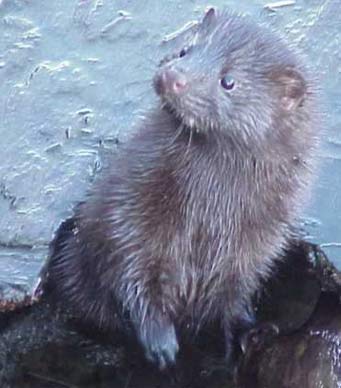Mink – Small but Agile and Clever Predator

Known for its fur more than any other animal, the American mink is also a very agile creature with a large range that covers almost all of North America (with the more arid regions of the United States being exceptions). They commonly have a length of 12 to 17 inches (31 to 45 centimeters), and a weight of up to 3.5 lbs (1.6 kg), and can move in many different manners. The mink moves with a bounding gait on land, reaching speeds of up to 4 mph (6.5 kmph); it can also climb trees and swim via undulating movements of it’s body. The mink uses its swimming ability (it can conserve enough oxygen to swim for up to 3 hours in warm water) to dive for fish. Their diet also consists of rodents, small birds, and crustaceans; they kill fish during the aforementioned dives, and kill vertebrates by biting the back of their necks.


Minks are solitary creatures that hold territories that overlap with those of the opposite sex, but show minimal overlap with those of the same sex; these territories are usually between 0.6 and 3.5 miles (1 to 6 kilometers). The mink will usually keep its den near water; the den will be a burrow, a hole under a log or tree stump or root, or a hollow tree. They will also sometimes take over dens left vacant by other species, and are known for the large number of exits (up to 8) that they make sure they have.
The mink is quite clever and one study showed them outperforming cats, skunks, and ferrets on certain intelligence tests.
Minks generally only show signs of vocal communication during threatening encounters. Despite being farmed and trapped for their fur more than any other animal, most species are not considered to be endangered in the slightest bit. The European mink however is facing some dire straights and has had a steep population decline in the last 100 years or so due to several factors. It is considered critically endangered.


